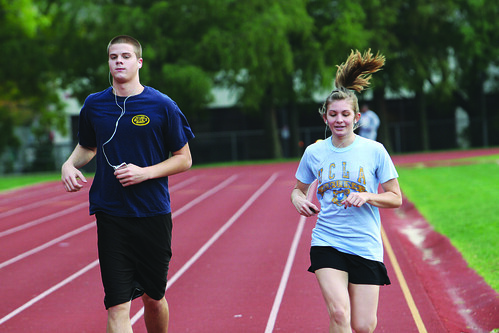Honesty isn’t always the policy people use when tracking time spent exercising. Lean people might be the biggest offenders in incorrectly recording the amount of exercise they have completed.
Temple researchers have disproved notions that obese women are dishonest about their reported exercise times in a new study.
The 12-month study was presented at an annual meeting for the Center for Obesity Research and Education.

Tracy Oliver, the study’s creator and lead health service specialist for the center, said obese women might report more unstructured activity, like getting the mail, in their daily exercise schedules than lean women.
Oliver originally came up with the idea for her dissertation while getting her doctorate in kinesiology, the study of human movement and exercise physiology.
The study examined 280 women, varying from average to obese weights. The average age of the participants was 47. The women were divided into three physical intervention groups in order to get a randomized sample of their physical activities. Participants were asked to report their exercise times before the study began, after three months and after 12 months.
Going into the study, Oliver said she anticipated different results than those that occurred.
“I anticipated I would find just the opposite – that lean women would record more accurate timings,” Oliver said.
Oliver said an accelerometer was used to measure the participants’ exercise times. The accelerometer is a device that captures the speed of minute by minute human movement.
Worn around the lower waist of the participants, the device also took note when a person removed it and could not be reset to alter time measurements. A pitfall of the device is it does not record upper body movements, such as weight lifting exercises.
By the end of 12 months, each of the three groups began reporting exercise times more accurately.
On Oct. 7, the U.S. Department of Health and Human Services announced a new standard of moderate physical activity for at least two and a half hours per week. Given this standard, women participating within the study were educated on how to increase their physical activity levels’ intensity throughout.
Oliver credited the participants’ knowledge of the study as encouragement to report more accurate exercise timings.
To further the study, Oliver said she would like to examine the recording of structured and unstructured activity by the participants, as well as examine what other factors might have played into the accuracy of the recording times.
For college students hoping to accurately record their exercise times at the gym, Oliver recommends a journal.
“Keeping a journal to record activity is the best way to self-monitor what’s going on.”
Kylee Messner can be reached at kylee.messner@temple.edu.


I always make sure that i get an exercise each day, exercise keeps me fit and healthy.`~~
the best exercise are full body exercises like military press and also swimming.*;:
i always exercise at leat 3 times a week to develope fuller muscles and cut down on body fat:*’